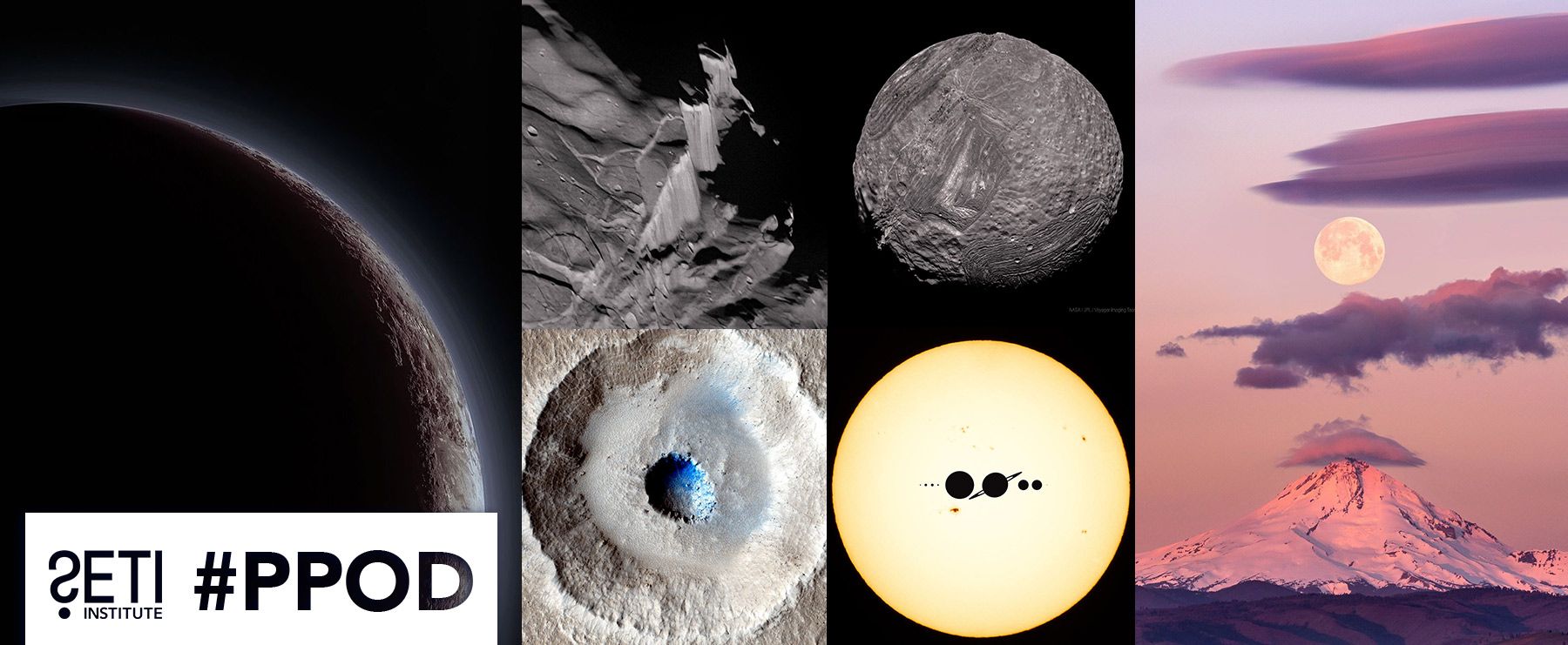
Planetary Picture of the Day
Week of January 9, 2023
They hazy atmosphere of Pluto, the Full Moon and Mt. Hood, and the cliffs of Miranda.
Monday, January 16, 2023
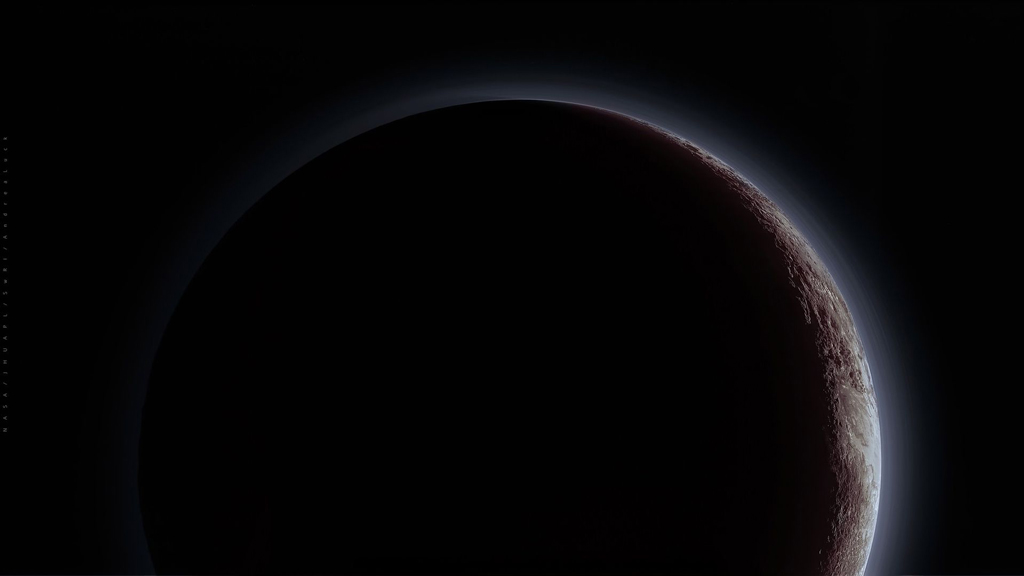
Credit: NASA/JHUAPL/SwRI/AndreaLuck
Sputnik Planum Sunset
Sunset over the incredible icy mountains of the Sputnik Planum on Pluto. This colorized image was created using data processed from NASA's New Horizons during its Pluto encounter 2015-07-14 at 18000 km.
Tuesday, January 17, 2023
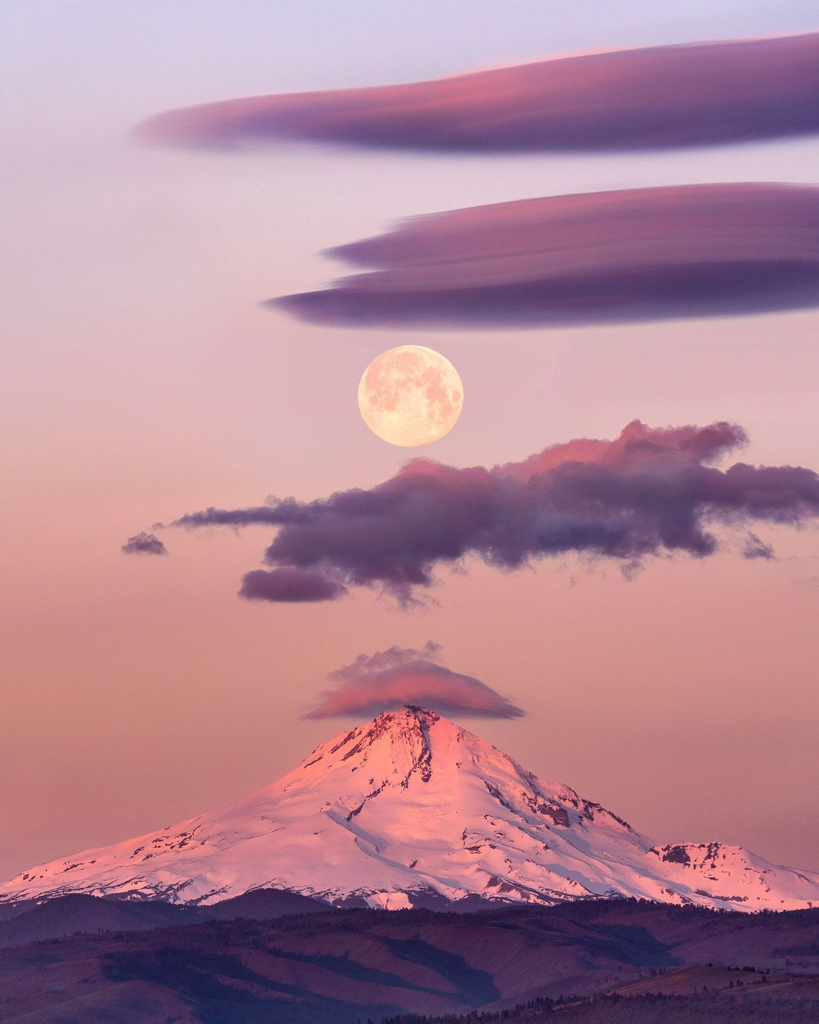
Credit: Autumn Schrock
Moon Over Mt. Hood
Nature photographers often strive to find the most beautiful shots they can. Here, photographer Autumn Schrock has captured the full Moon poised directly above the peak of Oregon's Mt. Hood. Mt. Hood is a stratovolcano in the Cascadia Volcanic Arc whose last known eruption occurred in 1866.
Wednesday, January 18, 2023
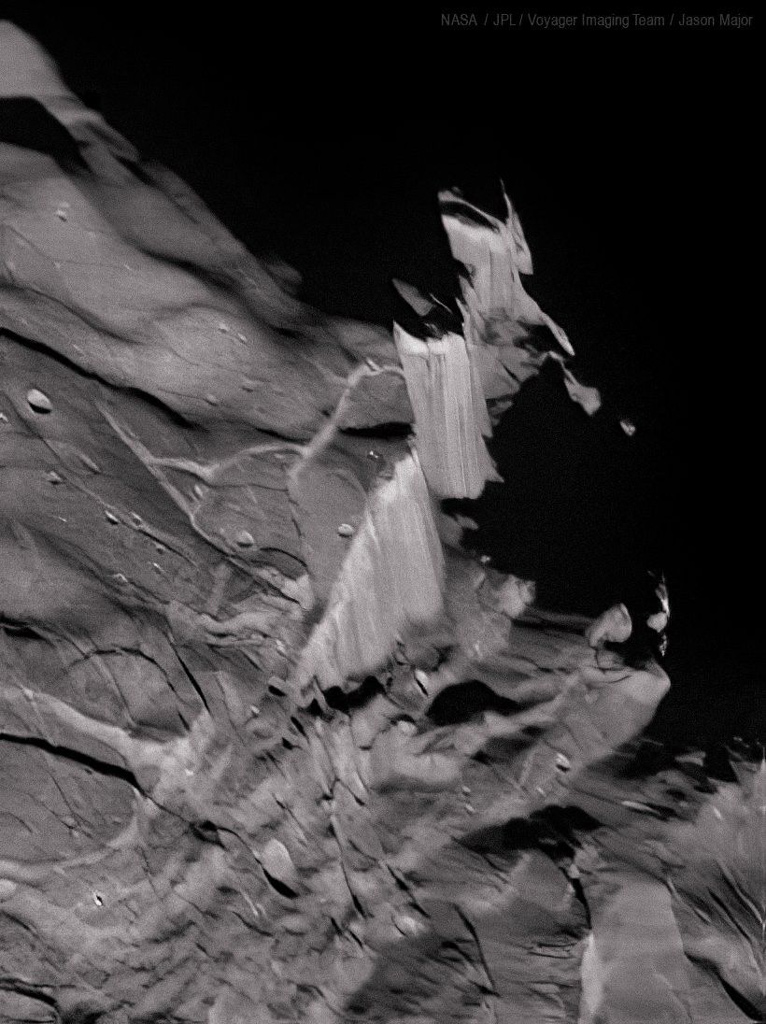
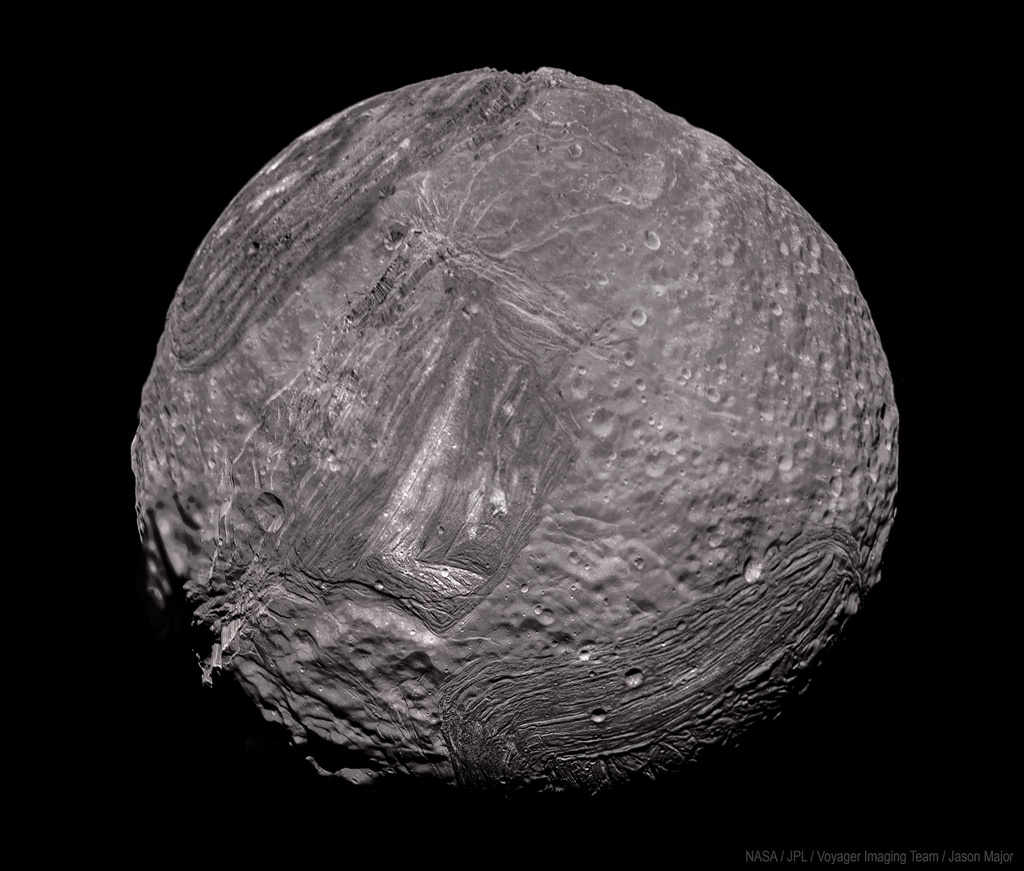
Credit: NASA/JPL-Caltech/SSI/J. Major
Cliffs of Miranda
A view of Verona Rupes, an approximately 20-km-high cliff of ice and rock on Uranus' moon Miranda. If you jumped off the top, you would take about 12 minutes to reach the bottom! Processed image data captured by NASA's Voyager 2 on January 24, 1986, from about 36,000 km away. You can see the cliff in the wider global view of Miranda down at the 8 o'clock position.
Thursday, January 19, 2023
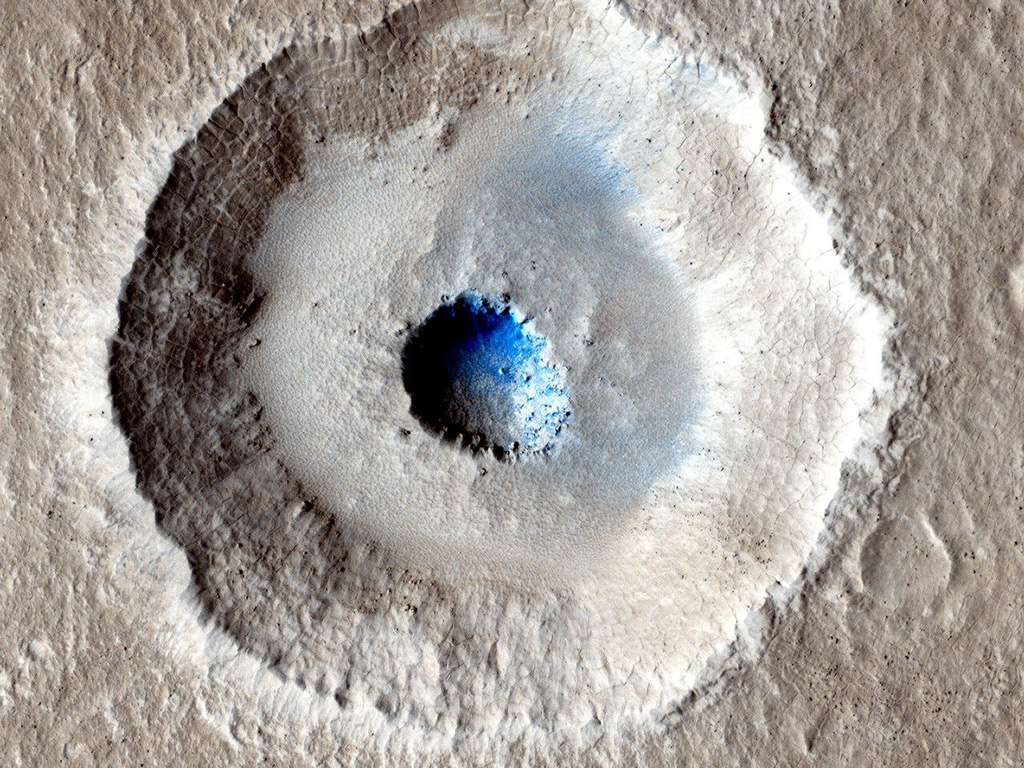
Credit: NASA/JPL-Caltech/UArizona
Craters in an Icy Surface
Small impact craters usually have simple bowl shapes, but sometimes more complicated shapes can occur if the target is unusual. The crater in the center of this HiRISE image is unusual because there is a wide, flat bench, or terrace, between the outer rim and the inner section, making it appear somewhat like a bullseye.
Crater shapes like this can occur if material underground changes from weak to strong. In these cases, the level of the terrace shows where this change occurs. In the area covered by this observation, we have other reasons to suspect that the upper material is mostly ice.
Terraced craters like this one show us how thick this ice is, as the terrace formation shows us where the ice meets the underlying rock.
Friday, January 20, 2023
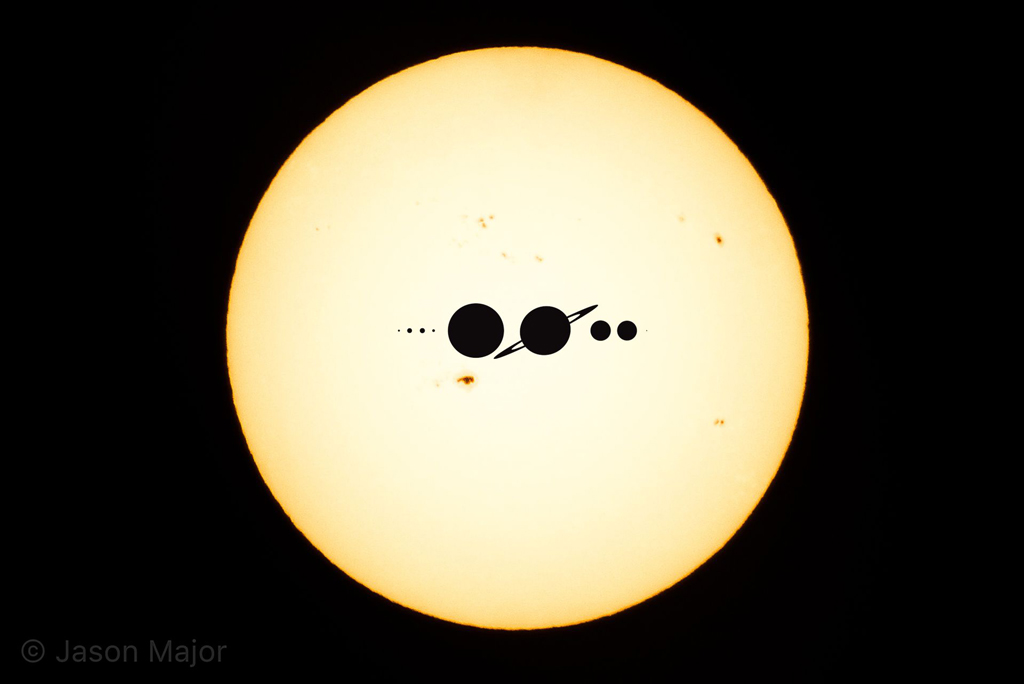
Credit: J. Major
Solar System Scale
The scale sizes of the planets lined up in order, left to right, from inner to outer planets as compared to the Sun, which is about 1.4 million km wide. (Using a filtered photo taken of the Sun on Jan. 18, 2023, with several active sunspot regions.)





